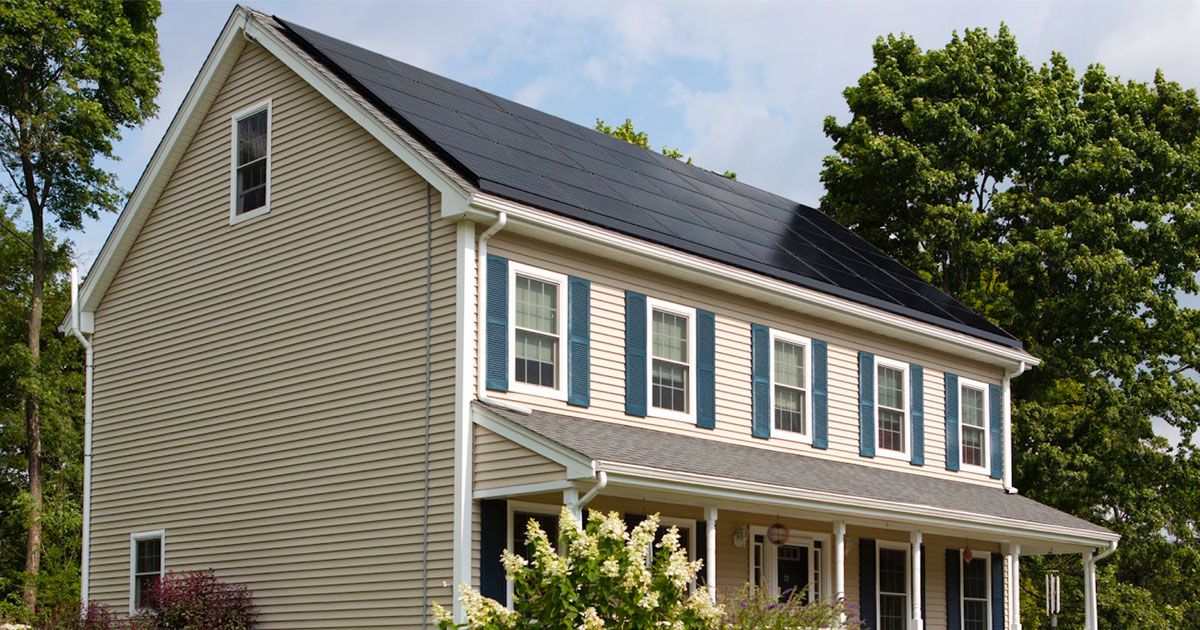Advertisement
How to Lower Your House Energy Bills
By Author
4 min read
Advertisement - Continue reading below
Homeowners are looking to save money any way they can. The expenses of modern life are only increasing, making money-saving tricks more valuable. Monthly energy bills might seem small in the grand scheme of things, but monthly bills add up over time. Every homeowner should work to reduce their bills, as even small changes can make a noticeable difference. There is no excuse for homeowners to settle for outrageous energy bills when there are many tricks homeowners can use for lower energy bills.
Below are just a few ways (some more involved than others) homeowners can lower their energy bills.
Solar Energy

The past decade has fostered the residential solar movement and now homeowners around the world are adding solar energy to their houses. Solar panels – roof-mounted, ground-mounted, or otherwise – rely on photovoltaic cells to convert sunlight to energy which is then sent through solar fuses and inverters before being stored in an energy bank. The cost of and energy savings from installing solar panels largely depends on where you live and the size of the solar energy system you choose to install, but the case for solar energy grows stronger every day.
Solar panels can greatly reduce your home’s reliance on grid electricity as solar energy is essentially free. Solar panels pay for themselves over time by generating free electricity; you earn your money back through reduced or eliminated energy bills. How much money solar panels can save you is heavily dependent on your specific situation as geographic location, roof angle, house orientation, and other factors can greatly affect the efficiency of solar panels. Some homes are better suited for solar energy than others, so talk with a solar panel consultant to determine the best plan of action for your house.
Programmable Thermostat
Heating and cooling a house is often the largest energy expense for a standard household. Simply leaving the heating or cooling system off and grabbing a blanket or desk fan instead can lower energy bills, but there is a way to save even more. Most houses come with thermostats where you must manually change the temperature, meaning when you forget to turn off the heat it will run and waste energy until you switch it off, but a programmable thermostat can solve that problem. A programmable thermostat lets you schedule when your heating/cooling will turn on so it is never running unnecessarily. Program your thermostat to hold an efficient temperature while you are away from home or asleep to save money without sacrificing comfort. Many programmable thermostats can also connect to WiFi, letting you control your home’s temperature through your smartphone.
Replace Your Air Filter
You can install a programmable thermostat, but if your air filters are clogged, then you cannot properly reap the benefits. Air filters catch debris like pollen, dust, dander, and lint to ensure your heating/cooling system is filling your home with clean air. Over time, air filters will accrue build-up which limits the flow of air. A dirty air filter cannot perform its job efficiently and can drag down the efficiency of your entire HVAC system. Set reminders to replace your air filters according to the manufacturer’s recommendation and you’ll help maintain lower energy bills each and every year.
Better Light Bulbs
For many years incandescent light bulbs were the standard and sometimes the only option, but now we have better choices in CFL and LED light bulbs. CFL and LED bulbs are more energy-efficient than incandescent bulbs, but also last longer and shine brighter, making CFL and LED bulbs the superior lighting option. While incandescent bulbs cost less per unit, they cost more over time. The upfront cost of CFL or LED bulbs is far outweighed by the lifetime savings these modern light bulbs provide. The average incandescent bulbs use 60W and last for 1,200 hours. Over 20 years, you will spend roughly $169 replacing a single dead incandescent bulb. An LED bulb uses 7W and has a lifespan of 25,000 hours which means over 20 years, you will replace a single LED bulb maybe twice for a rough total of $8.
Laundry

If you have a washing machine in your house, wash your clothes with cold water whenever possible. Heating water to use in your washing machine uses electricity whereas washing your clothes in cold water does not. Instead of using your dryer, consider air-drying your clothes. Hanging your clothes up to dry overnight ensures you have dry, clean clothes in the morning without using electricity. You can set up a clothesline outside or place a clothes-drying rack indoors to replace your dryer.
Lowering your home energy bills is an admirable and achievable goal. With a few simple changes, like installing a programmable thermostat, replacing air filters, using better light bulbs, and air drying clothes can lead to lower energy bills. Adding solar panels to your house is a larger commitment, but it can yield even better savings over years.
Gwen Lewis is a writer who lives in California. She has been in the fashion and health industry for years and loves writing on the topic to give tips from experience. In her free time, she loves to stay active and has just taken on learning how to surf. For more, visit her online portfolio here.
Advertisement - Continue reading below












